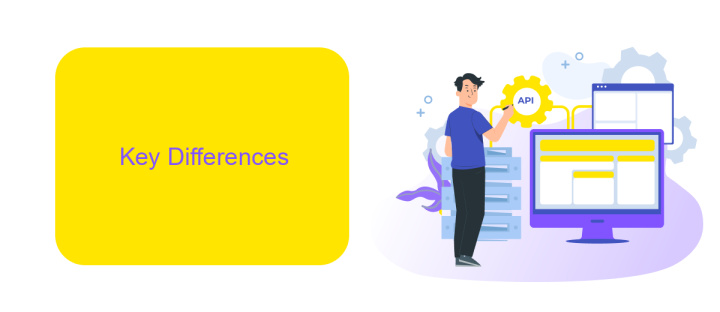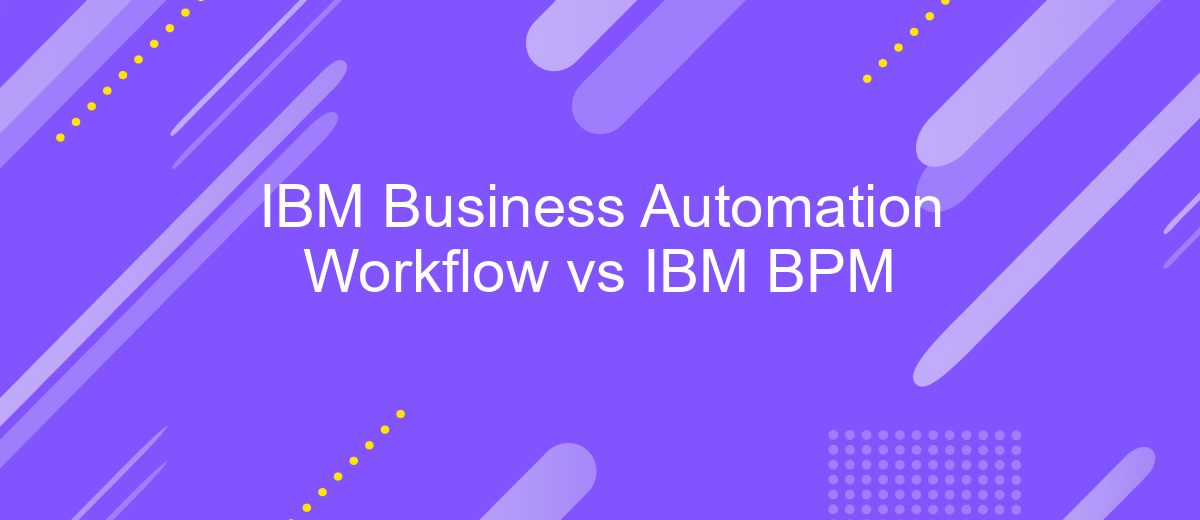IBM Business Automation Workflow vs IBM BPM
In the realm of business process management, IBM offers two powerful solutions: IBM Business Automation Workflow (BAW) and IBM Business Process Manager (BPM). Both platforms aim to streamline operations, enhance efficiency, and drive innovation. This article delves into the key differences, strengths, and potential use cases of IBM BAW and IBM BPM, helping businesses make informed decisions on which tool best suits their needs.
Introduction
IBM Business Automation Workflow (BAW) and IBM Business Process Manager (BPM) are two powerful tools designed to streamline and automate business processes. While both solutions aim to enhance operational efficiency, they offer distinct features and capabilities that cater to different business needs.
- IBM Business Automation Workflow (BAW): Combines business process management and case management into a unified platform, providing a comprehensive solution for managing workflows and business rules.
- IBM Business Process Manager (BPM): Focuses primarily on process automation, offering robust tools for designing, executing, and monitoring business processes.
Understanding the differences between IBM BAW and IBM BPM is crucial for businesses looking to optimize their operations. Additionally, integrating these solutions with other systems can further enhance their functionality. Services like ApiX-Drive facilitate seamless integration, allowing businesses to connect various applications and automate data flows effortlessly. This integration capability is essential for maximizing the benefits of both IBM BAW and IBM BPM.
Key Differences

IBM Business Automation Workflow (BAW) and IBM BPM are both robust tools designed for process management, but they cater to different needs and offer distinct features. IBM BAW integrates capabilities for both workflow and case management, allowing for more dynamic and flexible process automation. It is designed to handle complex, unstructured processes that require human intervention and decision-making. On the other hand, IBM BPM focuses more on structured, repeatable processes and excels in scenarios where consistency and efficiency are paramount.
Another key difference lies in their approach to integration. IBM BAW offers enhanced integration capabilities, making it easier to connect with various applications and services. For instance, using services like ApiX-Drive can simplify the integration process, allowing seamless data flow between IBM BAW and other platforms. IBM BPM, while also capable of integrations, may require more manual configuration and lacks some of the advanced integration tools found in IBM BAW. This makes IBM BAW a more versatile option for organizations looking to streamline complex workflows and enhance their automation capabilities.
Use Cases

IBM Business Automation Workflow (BAW) and IBM BPM serve different purposes but share common ground in business process management and automation. While IBM BPM focuses on streamlining and optimizing business processes, BAW offers a more comprehensive suite that includes case management and content integration.
- Process Optimization: IBM BPM is ideal for organizations looking to streamline repetitive tasks and improve operational efficiency. It can automate approval processes, manage workflows, and ensure compliance.
- Case Management: IBM BAW excels in managing complex cases that require human intervention and decision-making. It integrates content and data to provide a holistic view of each case, making it suitable for industries like healthcare and insurance.
- Integration Capabilities: Both platforms support integration with existing systems. Tools like ApiX-Drive can simplify the integration process, allowing seamless data flow between IBM solutions and other enterprise applications.
In summary, IBM BPM is best for optimizing structured processes, while IBM BAW offers a broader range of capabilities, including case management and content integration. The choice between the two depends on the specific needs and complexity of your business processes.
Pros and Cons

IBM Business Automation Workflow and IBM BPM are both powerful tools for managing business processes, yet they cater to slightly different needs. IBM Business Automation Workflow combines process management and case management in a single platform, offering more flexibility and adaptability. On the other hand, IBM BPM focuses on optimizing and automating business processes, providing a more structured approach.
One of the key advantages of IBM Business Automation Workflow is its ability to handle complex workflows that require human intervention and decision-making. This makes it ideal for dynamic environments where processes can change frequently. IBM BPM excels in scenarios where processes are well-defined and require minimal changes, ensuring efficiency and consistency.
- IBM Business Automation Workflow: Flexible and adaptive, suitable for complex workflows.
- IBM BPM: Structured and efficient, ideal for well-defined processes.
- Integration capabilities: Both platforms support integration with various services, including ApiX-Drive, to streamline workflows.
- Cost: IBM BPM may be more cost-effective for simpler, well-defined processes.
In conclusion, the choice between IBM Business Automation Workflow and IBM BPM depends largely on the specific needs of your organization. For dynamic, complex workflows, IBM Business Automation Workflow offers greater flexibility. For structured, well-defined processes, IBM BPM provides a more streamlined and cost-effective solution.
Conclusion
In conclusion, both IBM Business Automation Workflow and IBM BPM offer robust solutions for business process management and automation. While IBM BPM focuses on providing a comprehensive suite for modeling, executing, and optimizing business processes, IBM Business Automation Workflow combines these capabilities with additional features for case management and workflow automation. This makes it a more versatile option for organizations looking to streamline complex workflows and enhance operational efficiency.
When considering integration and automation needs, tools like ApiX-Drive can be invaluable. ApiX-Drive facilitates seamless integration between various applications, allowing businesses to automate data transfer and synchronize workflows effortlessly. By leveraging such services, companies can enhance the capabilities of either IBM Business Automation Workflow or IBM BPM, ensuring a more cohesive and efficient operational environment. Ultimately, the choice between these two platforms should be guided by specific business requirements and the desired level of automation and integration.
- Automate the work of an online store or landing
- Empower through integration
- Don't spend money on programmers and integrators
- Save time by automating routine tasks
FAQ
What is the primary difference between IBM Business Automation Workflow and IBM BPM?
Can IBM Business Automation Workflow be integrated with other systems?
Is IBM BPM still supported by IBM?
How does the licensing differ between IBM Business Automation Workflow and IBM BPM?
Can I migrate from IBM BPM to IBM Business Automation Workflow?
Apix-Drive is a universal tool that will quickly streamline any workflow, freeing you from routine and possible financial losses. Try ApiX-Drive in action and see how useful it is for you personally. In the meantime, when you are setting up connections between systems, think about where you are investing your free time, because now you will have much more of it.


